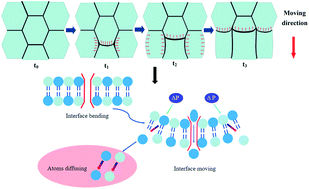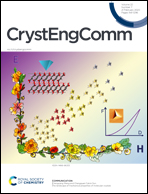The growth behavior of columnar grains in a TiAl alloy during directional induction heat treatments†
Abstract
In general, columnar grains can be easily obtained in a directional solidification process. However, in this study, columnar grains were achieved via a directional induction heat treatment (DHT). A TiAl ingot with equiaxed grains was induction-heated at 1750 K and preserved for 20 min. Then, it was pulled down into a liquid Ga–In alloy with a velocity of 4.17 μm s−1. The liquid Ga–In alloy was used for cooling the ingot at the bottom. The results show that the grains grow from the equiaxed to columnar after a competitive growth. The length of the directional growth zone is about 25 mm and the maximum length of columnar grains is 15.5 mm. Lamella orientation with a small angle (less than 60°) is about 90% in all the columnar grains, which is higher than that of the ingot prepared via a traditional directional solidification. The driving force for the columnar grain growth is the bending interface tension caused by the heat transfer from the induction heating zone to the bottom. The atoms in front of the interface will diffuse downward under the action of interface tension during DHT; therefore, the grains will grow up along the axial direction. The interface migration rate (namely growth rate) of the columnar grains was calculated based on the model of interface continuous moving. The calculated results indicate that the interface migration rate ranged from 0.350–0.505 μm s−1 at 1750 K.



 Please wait while we load your content...
Please wait while we load your content...